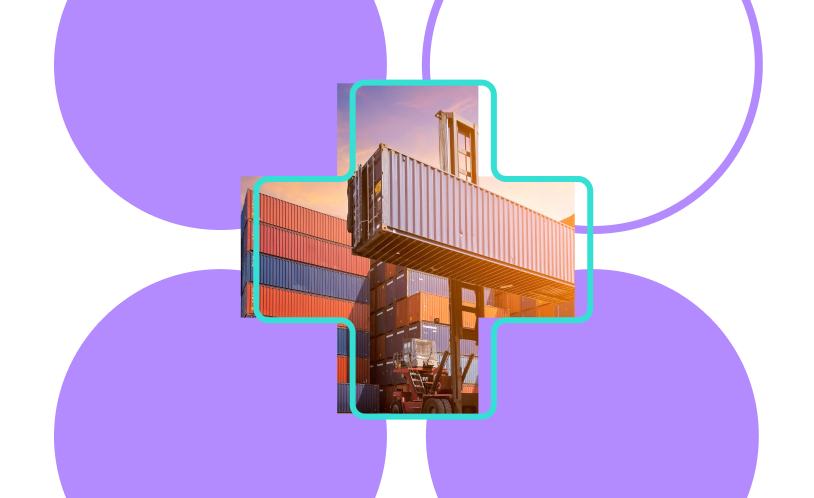US Customs (Customs & Border Protection, or CBP) is responsible for enforcing US customs regulation, and also acts on behalf of more than 20 other agencies. They collect duties, taxes (like with alcohol or tobacco), and fees.
Customs strongly recommends that you consult with a US licensed customs broker or trade consultant early on, because US import regulations are complex. This guide provides only a very high-level introduction to Customs and your regulatory responsibilities.

Calculate the Cost of your Clearance
Calculate the cost of your customs clearance hassle-free! Here’s a simple and efficient method to estimate all associated expenses, including duties and fees, when importing goods.
Your Responsibilities As An Importer Of Record
Unless the supplier is making the import declaration, you will be the Importer of Record (IOR). Your importer number will be your Social Security Number (unless you are a corporation or non-US resident).
As the IOR, it’s your responsibility to be correctly informed and take ”reasonable care” to provide the correct information that Customs needs to do their job (without necessitating examinations). It’s customary for the IOR to authorize a customs broker to file on their behalf, but, there are some links in the Further Reading section if you are still thinking that you might decide to go it alone.
Another IOR responsibility is that you must have a bond to cover any shipment valued over $2,500. Customs bonds are covered in more detail in the Customs Process guide.
Your Responsibilities With Shipments
Classification
If you are importing goods into the US, it is your responsibility to accurately classify the product. This is done through the ten-digit code Harmonized Tariff Schedule (HTS), which is an extension of the six-digit international HS code system. Your product’s HS code helps determine how much, if any, customs duties apply and is used for enforcing other import regulations.
The Customs Duty guide covers product classification in more detail.
Customs Value
As an importer, it is your responsibility to accurately declare shipment value. Usually, it’s the price listed on your commercial invoice, but valuation can get complicated. For instance, Customs may require that selling commissions, non-US design or product work costs, and royalty or licensing fees, be included in the invoice value. On the flipside, you may deduct post-import transport, construction, assembly or maintenance charges, and buying commissions.
Undervaluing your shipment value to reduce or avoid duty payments is a risky game. Ethical values and insurance payouts aside, you may get away with it once, or a few times, but when Customs eventually catches you, you will face:
1. Examination charges and costs of transportation and storage, which can dramatically increase the cost of a shipment.
2. Fines and penalties for all under-valuations made over the past five years.
3. Criminal penalties and bans from further importing (for egregious behavior only).
To steer clear of trouble, make sure your commercial invoice:
1. Is written in English and accurately describes your merchandise in layman’s terms.
2. Provide sufficient detail about what your product is made of, what it is used for, etc, and avoid using abbreviations or technical slang,
3. Correctly states the country of origin,
4. Accurately reflects the price you paid.
Country Of Origin
Getting your product’s country of origin right is important because it determines:
- If your shipment is exempt from duty because of a free trade agreement.
- Whether your shipment is held back because of quota rules.
- If your product is subject to anti-dumping or countervailing duties.
Also, make sure that the country of origin is clearly listed on your commercial invoice, and that you follow any marking and labeling requirements.
Intellectual Property (IP)
IP covers inventions, literary and artistic works, as well as symbols, names, images, and designs used in commerce. If your product infringes IP rights, Customs can seize your shipment.
If you are importing goods or packaging bearing trademarks, make sure the marks are genuine and not counterfeit, and that you have written permission from the trademark holder to import goods bearing the trademark, or copyright holder if the copyright has been registered with the US Copyright Office.
So how do you find out if a trademark or copyright applies?
- If the product, label, even wording, is similar to a name brand, check that company’s site for IP details.
- If you are worried that a product may be counterfeit, confirm with the supplier that they have a license from the trademark holder to manufacture or sell products with that trademark.
- If you’re unsure about anything to do with IP, engage a regulatory consultant or get legal advice.
Customs Responsibilities
Customs has a number of regulatory responsibilities, that affect you as an importer, including the following.
Customs Duties
All products imported into the US are subject to a duty percentage (although some are 0%). These duty rates are commodity-specific but apply across every country (except North Korea, Iran, and Sudan), unless that commodity and country are included in a US free trade agreement.
Punitive Tariffs
This tariff is applied to punish a country for unfair trade practices (or, sometimes for national security) by imposing additional tariffs on specific products. These tariffs can even override free trade agreements.
The proposed 25% retaliatory tariff response on a range of imports from China is an example of a punitive tariff. The US considers that US companies applying to do business there often have to provide details that result in Chinese authorities gaining access to confidential technologies and other information.
Anti-Dumping & Countervailing Duties
Anti-dumping and countervailing (AD/CVD) duties are applied when the imported products are considered to have been unfairly subsidized, or be priced below fair market value. These tariffs apply to specific combinations of HTS code and specific countries of origin.
Many very common imports from China, like colored pencils, notebooks, and wire hangers, have these additional duties. The amount of duty can even make it unprofitable to import. Consult a customs broker, or do your homework. Active AD/CVD investigations and orders are listed on the ITC website.
Unauthorized Entry Of Restricted Imports
Beyond Customs regulations, your product may be regulated by one of over twenty Partner Government Agencies (“PGAs”), such as the FDA, CPSC, Fish & Wildlife Service, and the APHIS. The Customs site has links to each PGA’s import regulations guide.
These agencies are on the lookout for specific commodities, and they can show up in unexpected places. Take, for instance, the FDA who regulate a wide range of products including food, cosmetics, drugs, medical devices, and anything that might come into contact with food or drugs. They have a broad definition of what constitutes a medical device, including everyday products like toothbrushes, dental floss, non-prescription sunglasses. Likewise, lip balm, sunscreen, and hand sanitizers are regulated as drugs.
If you are planning to import a restricted product, check with the manufacturer that their products are registered with the FDA, and ask for proof.
This guide was contributed by Andre LaMorgia from INLT
Learn more about Importer & Customs Responsibilities here.



